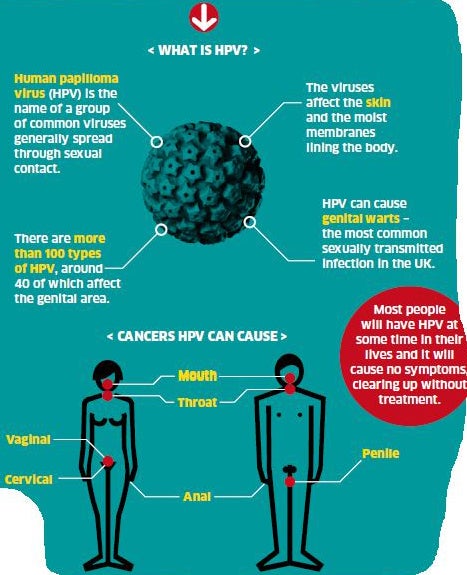Controversial vaccine reduces HPV in teenage girls by nearly two-thirds
Human papillomavirus, or HPV, infects about 14 million Americans each year

Your support helps us to tell the story
From reproductive rights to climate change to Big Tech, The Independent is on the ground when the story is developing. Whether it's investigating the financials of Elon Musk's pro-Trump PAC or producing our latest documentary, 'The A Word', which shines a light on the American women fighting for reproductive rights, we know how important it is to parse out the facts from the messaging.
At such a critical moment in US history, we need reporters on the ground. Your donation allows us to keep sending journalists to speak to both sides of the story.
The Independent is trusted by Americans across the entire political spectrum. And unlike many other quality news outlets, we choose not to lock Americans out of our reporting and analysis with paywalls. We believe quality journalism should be available to everyone, paid for by those who can afford it.
Your support makes all the difference.A controversial vaccine introduced a decade ago has led to nearly two-thirds fewer teenage girls being infected by a sexually transmitted virus that causes cervical cancer, according to a new study released on Monday.
Human papillomavirus, or HPV, infects about 14 million Americans each year. Though most of the 40 varieties are harmless, its most dangerous strains are associated with several cervical, mouth, and throat cancers.
The HPV vaccine was introduced in 2006, but immunisation rates have remained low despite an official recommendation from the Centers for Disease Control and Prevention, including a recommendation to vaccinate boys as well. Dozens of cancer centers have endorsed the vaccine as safe and effective, but only about about 40 per cent of girls and 20 per cent of boys ages 13 to 17 have been vaccinated.

A new study, published in the journal Pediatrics, examined rates of HPV in girls from 2003 to 2006 - the years before the vaccine was introduced – and then again in 2009 to 2012.
Federal researchers found that the prevalence of HPV had fallen by 64 per cent in girls ages 14 to 19.
The results were less dramatic for older women, with rates falling 34 per cent in girls 20 to 24, and not falling in women over 25. The effect of the recommendation to vaccinate boys will be included in further studies.
“A minority of females in this country have been immunised, but we’re seeing a public health impact that is quite expansive,” said Dr Amy Middleman, chief of adolescent medicine at the University of
Oklahoma Health Sciences Center, as reported by the New York Times. Dr Middleman was not involved in the study.
Widespread adoption of the vaccine has been slow because of its association with teenage sexual activity and the corresponding stigma.
Studies have shown that many primary care providers are reluctant to recommend the vaccine, in part because they feel that it will bring up a subject that can be uncomfortable for parents to discuss.
Structural factors are also at play: in the United States, the HPV vaccine is mostly optional and given in three doses, unlike in other countries where it can be administered in two doses and is offered for free in schools. Rwanda, for example, has a 93 per cent immunisation rate in girls.
This week, an immunisation advisory committee to the Centers for Disease Control will meet to learn more about the efficacy of offering the vaccine in two doses instead. Meanwhile, some doctors continue to push for the vaccine to be adopted alongside other ones, such as those for tetanus and diphtheria, recommended for teens.
Join our commenting forum
Join thought-provoking conversations, follow other Independent readers and see their replies
Comments